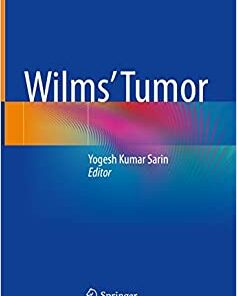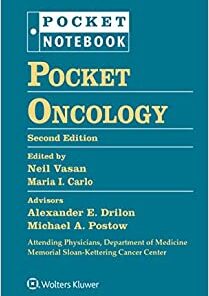- Series: Series in Medical Physics and Biomedical Engineering
- Hardcover: 392 pages
- Publisher: CRC Press; 1 edition (March 2, 2018)
- Language: English
- Format: Original Publisher PDF.
- ==========================+======================
-
Note : We will send ebook download link after confirmation of payment via paypal success
Payment methods: Visa or master card (Paypal)
A Guide to Outcome Modeling In Radiotherapy and Oncology: Listening to the Data (Series in Medical Physics and Biomedical Engineering) 1st Edition PDF
$15
by Issam El Naqa (Editor)
- Covers top-down approaches applying statistical, machine learning, and big data analytics and bottom-up approaches using first principles and multi-scale techniques, including numerical simulations based on Monte Carlo and automata techniques
- Provides an overview of the available software tools and resources for outcome model development and evaluation, and includes hands-on detailed examples throughout
- Presents a diverse selection of the common applications of outcome modeling in a wide variety of areas: treatment planning in radiotherapy, chemotherapy and immunotherapy, utility-based and biomarker applications, particle therapy modeling, oncological surgery, and the design of adaptive and SMART clinical trials
A Guide to Outcome Modeling In Radiotherapy and Oncology: Listening to the Data (Series in Medical Physics and Biomedical Engineering) 1st Edition PDF
This book explores outcome modeling in cancer from a data-centric perspective to enable a better understanding of complex treatment response, to guide the design of advanced clinical trials, and to aid personalized patient care and improve their quality of life. It contains coverage of the relevant data sources available for model construction (panomics), ranging from clinical or preclinical resources to basic patient and treatment characteristics, medical imaging (radiomics), and molecular biological markers such as those involved in genomics, proteomics and metabolomics. It also includes discussions on the varying methodologies for predictive model building with analytical and data-driven approaches.
This book is primarily intended to act as a tutorial for newcomers to the field of outcome modeling, as it includes in-depth how-to recipes on modeling artistry while providing sufficient instruction on how such models can approximate the physical and biological realities of clinical treatment. The book will also be of value to seasoned practitioners as a reference on the varying aspects of outcome modeling and their current applications.
Features:
Product details
Related Products
ONCOLOGY BOOKS
ONCOLOGY BOOKS
ONCOLOGY BOOKS
ONCOLOGY BOOKS
ONCOLOGY BOOKS
ONCOLOGY BOOKS
Internal Medicine Books
The PassMachine Medical Oncology Board Review 2020 (v5.1) (Beattheboards) (Lectures)
ONCOLOGY BOOKS
ONCOLOGY BOOKS
ONCOLOGY BOOKS
ONCOLOGY BOOKS
ONCOLOGY BOOKS
ONCOLOGY BOOKS
Advanced Skin Cancer A Case-Based Approach 2022 Original pdf
ONCOLOGY BOOKS
ONCOLOGY BOOKS
ONCOLOGY BOOKS
ONCOLOGY BOOKS
ONCOLOGY BOOKS
ONCOLOGY BOOKS







































































































